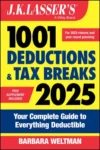Partial Home Sale Exclusion Allowed for Blended Family
A homeowner can gain from the sale of a primary residence up to $250,000, or $500,000 on a joint return, if he or she has owned and lived in the home for at least two of the five years preceding the date of sale and has not used the exclusion within a two-year period. However, a partial exclusion is allowed if an early sale is caused by a change in employment, health, or unforeseen circumstances.
Listed unforeseen circumstances
Five situations automatically are viewed as being unforeseen:
- Death
- Job loss making the homeowner eligible for unemployment benefits
- Change in employment or self-employment that makes the homeowner unable to pay expenses
- Divorce or legal separation
- Multiple births resulting from the same pregnancy
However, if none of these safe harbor circumstances applies, a homeowner may be eligible for the partial exclusion by showing facts and circumstances supporting an unforeseen circumstance.
Blended family
A mother with two daughters owned a home and then purchased another residence. She sold the first home and claimed the home sale exclusion (she met the two-year ownership and use test). She later married a man who had a son, moved into his home, and sold her second residence. Again, she had met the two-year test but the second sale occurred within two years of the first sale. The second residence was not suitable for the blended family, which consisted of three adolescent children. There was not adequate space and, if the husband and his son moved into her home, the son would have had to change schools.
She requested that she be allowed to exclude gain on the partial home sale exclusion rule for unforeseen circumstances. Here, since the primary reason for the sale of the second residence was the occurrence of an unforeseen circumstance-marriage and a blended family-she can claim a partial exclusion. Having shown an unforeseen circumstance, the rule that disallows an exclusion for a second sale within a two-year period is supplanted by the availability of a partial exclusion. Thus, even though the second sale occurred within two years of the sale of her first home, a partial exclusion is allowed.
Note: In all likelihood, a partial exclusion will be sufficient in most cases to make the gain on the sale tax free.
Source: Letter Ruling 200826024
Capital gain distribution
A mutual-fund distribution allocated to gains realized on the sale of fund portfolio assets. You report the distribution as long-term capital gain even if you held the fund shares short term.



